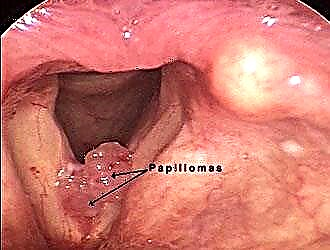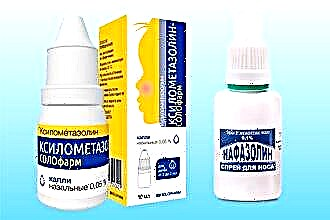 Also, the passage of air is hampered when the airway lumen is narrowed due to spasm of smooth muscles. The infant may also wheeze due to some congenital anatomical features of the respiratory system.
Also, the passage of air is hampered when the airway lumen is narrowed due to spasm of smooth muscles. The infant may also wheeze due to some congenital anatomical features of the respiratory system.
It is necessary to distinguish between the concepts of "wheezing" - noises when breathing, and "hoarseness" - a change in the timbre of the voice, (hoarseness).
Let's talk about why a newborn may become hoarse, and also discuss the causes of breathing noises in children under 3 years of age.
Wheezing in the throat in a healthy child
It is not uncommon for babies to wheeze in their throats. The reasons for this phenomenon are as follows:
- inability to swallow saliva - especially typical for 3-4 month old children, in whom saliva is produced very actively;
- teething - also causes increased production of saliva, and is also accompanied by swelling of the mucous membrane of the oropharynx, which can provoke the appearance of wheezing;
- wheezing in the throat may appear when food is regurgitated;
- some babies wheeze in their throats simply due to accumulation of phlegm; when the child learns to hold the head and sit, the wheezing will disappear by itself;
- the child may become hoarse when the vocal cords are overstrained (prolonged screaming, crying).
Periodic wheezing of a baby who eats, sleeps and plays well, in most cases does not threaten his health. However, parents must be vigilant. You should measure the child's body temperature, check if he has a runny nose, or if his throat is red.
If you are worried that your child occasionally wheezes, pay the attention of your pediatrician. After examining the baby, he will find out if there are reasons for excitement.
Colds and hoarseness
Colds are diseases, the risk of which increases significantly in conditions of hypothermia. In the vast majority of cases, colds are caused  viruses of the ARVI group (acute respiratory viral infections). That is why the concepts of "cold" and "ARVI" are often used interchangeably.
viruses of the ARVI group (acute respiratory viral infections). That is why the concepts of "cold" and "ARVI" are often used interchangeably.
A feature of ARVI in children 1-5 years of age is that the infection affects several parts of the respiratory tract at once, as a result of which hoarseness is accompanied by a runny nose, sneezing, coughing and other symptoms of a cold.
If a viral infection affects the larynx, laryngitis develops. Since it is in the larynx that the vocal cords are located, laryngitis is always accompanied by hoarseness. In some cases, with laryngitis, the voice disappears almost completely. Other symptoms of inflammation of the larynx in an infant include:
- increased body temperature;
- poor appetite;
- barking cough;
- moodiness, sleep disturbance;
- older children may complain of pain, dryness, or sore throat;
- very often the disease is accompanied by nasal congestion and runny nose.
In young children, respiratory infections tend to spread to the lower respiratory tract - the trachea, bronchi and alveoli. In order to prevent the development of bronchitis and pneumonia, you need to treat laryngitis on time.
Laryngitis treatment
Laryngitis treatment includes antiviral or antibacterial drugs in combination with antiseptics and anti-inflammatory drugs. The complexity of the treatment of infants lies in the fact that most drugs are allowed to be used from the age of 3.
Many medical procedures are contraindicated for babies - steam inhalations, gargling, resorption of lozenges, irrigation of the throat with sprays.
What measures should parents take to improve the well-being of their child?
Use only those medications that are approved in infancy. The throat can be treated with the Aqualor throat aerosol. You should not direct the aerosol stream directly into the throat - this can provoke a coughing attack and even laryngospasm. The spray must be gently applied to the inner side of the child's cheek, and it will distribute itself along the oropharynx. You can also give your child a weak decoction of pharmacy chamomile, literally a teaspoon each - this replaces gargling.
Make sure the baby's nasal breathing is not impaired. If your child's nose is blocked, use a vasoconstrictor nasal drops such as Vibrocil.
If necessary, antipyretic drugs are used in the treatment of laryngitis, such as Viferon, Paracetamol, Ibuprofen for children. Antipyretics for children are available in convenient forms - in the form of rectal suppositories, syrups and suspensions. They resort to antipyretic when the temperature rises to 38 C.
True and False Croup
Croup is called acute obstructive laryngitis. Obstruction means a sharp narrowing of the lumen of the respiratory tract. Croup is a very dangerous condition that can be fatal. Children 1-3 years of age are most susceptible to croup.
Swelling of the mucous membrane of the larynx of an infant by only 1 mm narrows the lumen of the respiratory tract by half, as a result of which suffocation may develop.
Distinguish between true and false croup. True croup is associated with diphtheria, a childhood infectious disease. With diphtheria, the tonsils and lymph nodes are significantly enlarged. The child's neck swells, the throat becomes covered with a thick film that impedes the passage of air. There is only one treatment for diphtheria - the introduction of antitoxic antidiphtheria serum (PDS), which neutralizes the poisons secreted by the causative agent of diphtheria.
The so-called false croup develops in viral and bacterial diseases that can lead to a narrowing of the upper respiratory tract. It can occur against the background of ordinary laryngitis with ARVI.
Croup symptoms:
- hoarseness of voice;
- wet barking cough;
- shortness of breath, wheezing when inhaling air;
- attacks of shortness of breath at night;
- cardiopalmus;
- profuse sweating;
- blue face.
If such symptoms occur, you must urgently call an ambulance.
The child should be picked up in an upright position, calm down. Try to give him warm mineral water - it helps to thin the phlegm and makes breathing easier. It is recommended to take your child out into the fresh air or open a window. Many experts advise instilling vasoconstrictor drops on the baby's nose. As they flow down, they are distributed over the nasopharynx, reducing edema.
Stridor of newborns - what is it and how to treat it?
Stridor is a rough wheezing sound that accompanies breathing in various pathologies of the respiratory tract. Often, stridor is caused by congenital malformations of the larynx, epiglottis and trachea. In particular, the stridor can be associated with the following pathologies:
- Larynglomalacia is the sinking of the larynx or epiglottis into the lumen of the respiratory tract due to insufficient rigidity of the cartilage tissue. Usually, by reaching 1.5-2 years of age, the symptoms of the disease disappear.
 Trehomalacia is a weakness of the cartilaginous tissue of the trachea. It manifests itself as a stridor on exhalation. Like laryngomalacia, tracheomalacia can disappear as you get older. Only in rare cases does the patient require surgical intervention.
Trehomalacia is a weakness of the cartilaginous tissue of the trachea. It manifests itself as a stridor on exhalation. Like laryngomalacia, tracheomalacia can disappear as you get older. Only in rare cases does the patient require surgical intervention.- Cysts of the larynx and epiglottis can be diagnosed even in an infant. Small cysts do not cause any symptoms other than wheezing in the throat. If the cyst is large, it makes breathing difficult. Surgical treatment.
- Juvenile papillomatosis of the larynx is a benign tumor of the mucous membrane.The disease is diagnosed at 2-3 years of age, sometimes earlier. The first symptom is hoarseness of the voice, then the stridor joins on inhalation and exhalation. Treatment includes surgical removal of papillomas and antiviral therapy.
Stridor should be suspected if wheezing in an infant does not disappear for a long time and does not respond to traditional treatment.

 Trehomalacia is a weakness of the cartilaginous tissue of the trachea. It manifests itself as a stridor on exhalation. Like laryngomalacia, tracheomalacia can disappear as you get older. Only in rare cases does the patient require surgical intervention.
Trehomalacia is a weakness of the cartilaginous tissue of the trachea. It manifests itself as a stridor on exhalation. Like laryngomalacia, tracheomalacia can disappear as you get older. Only in rare cases does the patient require surgical intervention.

